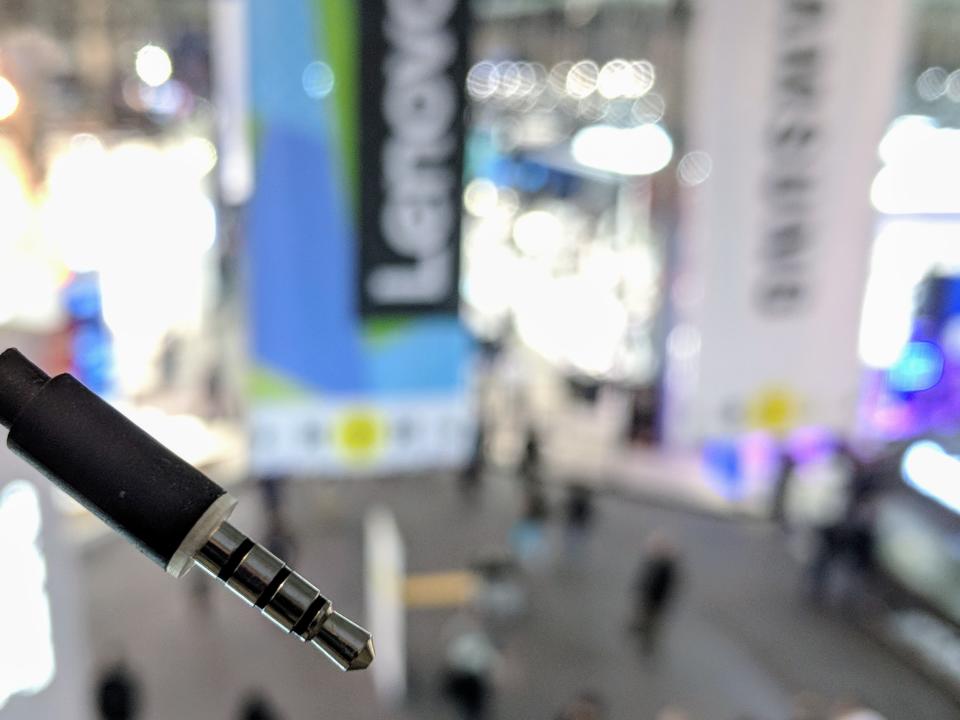The headphone jack isn't dead yet

BARCELONA — If you want your next smartphone to work with all of the wired headphones you may have accumulated over the last decade, the smartphone selection on display at Mobile World Congress suggest two simple strategies: Buy a Samsung, or don’t spend too much money on a different Android phone.
Samsung deciding to zig when Apple (AAPL) zags and retain the familiar 3.5mm headphone jack was no surprise, and neither was the persistence of that 1960s-vintage audio output in cheaper smartphones. But the choices of some mid-tier mobile manufacturers to move to USB-C and wireless connections—in some cases, only on their most expensive models—is a little harder to grasp..
Team headphone jack
Samsung’s Sunday-evening launch of its new Galaxy S9, $719, and S9 Plus, $839, featured multiple jabs at Apple, but none of it was fairer than its needling of its rival for removing the headphone jack from the iPhone 7 and subsequent models.
Apple’s action inconvenienced customers without providing them any increase in audio quality. Yes, Apple’s wireless AirPods are marvels of design—but they also cost $170 and become yet another item you need to recharge.
(The subsequent move by Google (GOOG, GOOGL) to jettison the headphone jack from its Pixel 2 phones was even more foolish, given that Google’s wireless Pixel Buds aren’t that great. But almost nobody has bought a Pixel 2, so it would have arguably been mean for Samsung to swat at that.)
Samsung has done customers a favor in resisting “Apple does it, so it must be right” logic. So have such smaller vendors as Alcatel and ZTE, whose own MWC debuts have included that same analog connector.
But those firms also face an economic incentive to stick with tradition: Their phones generally sell for much less than those of a Samsung, an Apple or a Google. It would be marketing malpractice to ship a model optimized for USB-C or wireless headphones that cost considerably more than the wired sort.

Sony and HTC: Hit the road, jack
At last year’s MWC, HTC was the sole major Android vendor to drop the headphone jack. Despite HTC’s failure to advance in the market since then with the equally jack-deprived U11 series of smartphones, it now has company in that decision: Sony.
The Japanese electronics firm introduced two new Android phones, the XZ2 and XZ2 Compact, that each feature only a USB-C connector on the bottom. Sony would prefer that you buy either one of its USB-C headphones or its new, AirPod-esque Xperia Ear Duo wireless headphones.
(Sony hasn’t announced prices on any of this hardware.)
“It’s about wanting to sell something else” said Creative Strategies analyst Carolina Milanesi. “Sony is in the headset business and has been in it for a long time.”
She allowed that a move to voice-driven assistants like Google Assistant and Apple’s Siri—which can be less socially awkward to use in public with wireless headphones—could prove this strategy right.
“If a headset now becomes a device more than an accessory, and consumers are willing to pay for it, maybe there is a point there the jack is not necessary,” Milanesi said.
Then again, Samsung sells quite a few headphones itself, especially since acquiring the high-end audio vendor Harman two years ago. And it has its own voice-driven-assistant strategy built around its proprietary Bixby.
Meanwhile, the headphones that will come with these two Sony smartphones will be old-school 3.5mm wired models, North American marketing vice president Don Mesa said in an interview. You’ll have to plug them into an adapter that will also come in the box—although this adapter, unlike Apple’s, will include a pass-through plug allowing users to charge the phone and listen to music.
Huawei and Nokia: yes and no
Two vendors with a larger profile outside the U.S. than in it have instead placed different bets. Flagship phones on display here from Huawei and Nokia leave out the headphone jack—but their cheaper models retain it.
Huawei’s Mate 10 Pro—the $800 phone that AT&T (T) decided not to launch at CES—doesn’t include a headphone jack but does come with a high-end set of USB-C headphones. The Chinese firm’s cheaper models, however, continue to offer that analog output.
The latest Nokia-branded Android phones from HMD Global show a similar split. The New Nokia 6 (an actual brand name to distinguish this model from last year’s) and Nokia 7 Plus retain a headphone jack, but the sleeker and far more expensive Nokia 8 Sirocco, at €749, does without it.
Charging the customer more for a phone missing what was once universally regarded as a core capability sets up an interesting marketing experiment. If people then choose to buy high-priced over cheaper but more compatible phones from the same firms, it will be hard to blame manufacturers for following Apple and Google’s examples.
More from Rob:
Email Rob at [email protected]; follow him on Twitter at @robpegoraro.
Follow Yahoo Finance on Facebook, Twitter, Instagram, and LinkedIn
